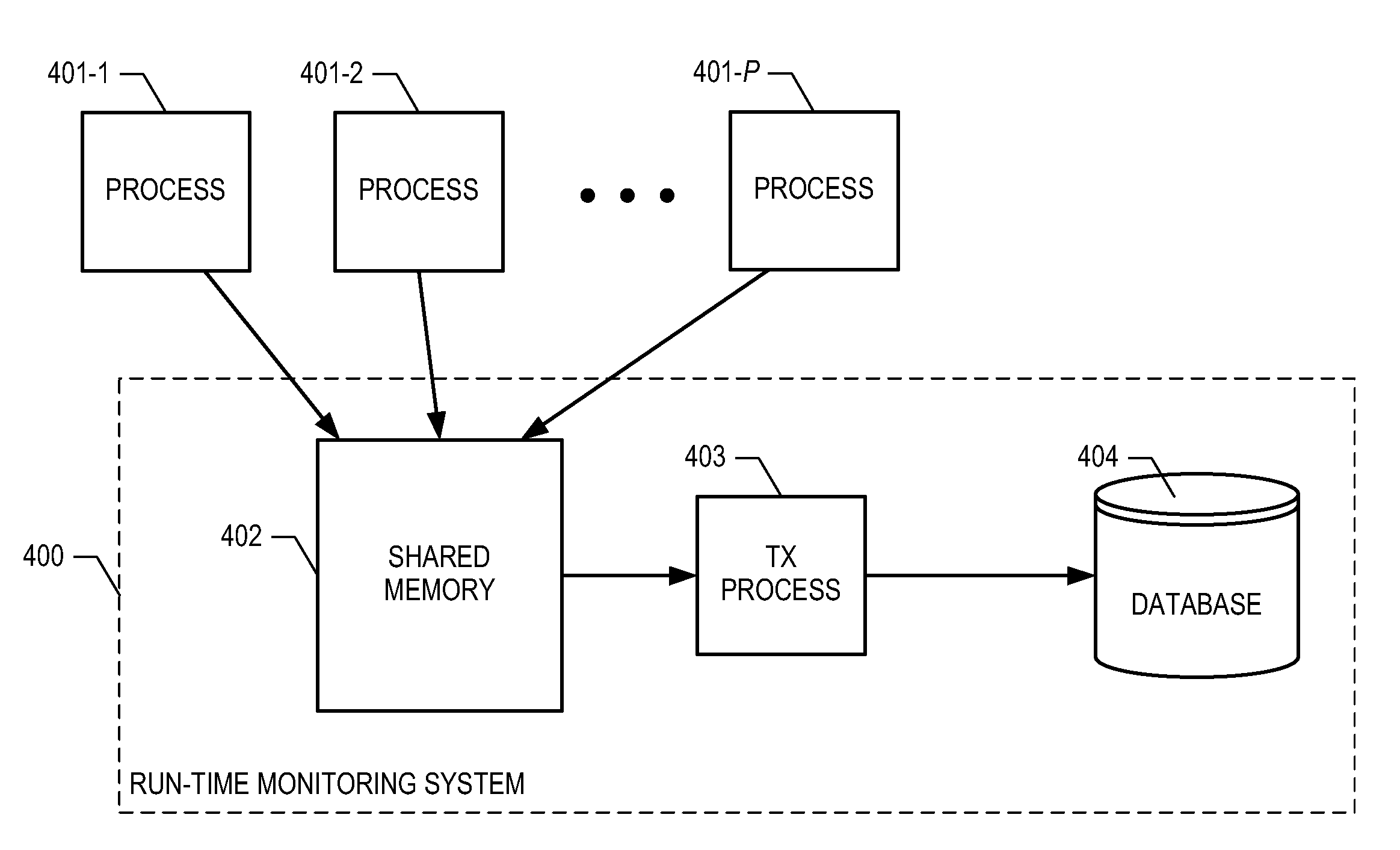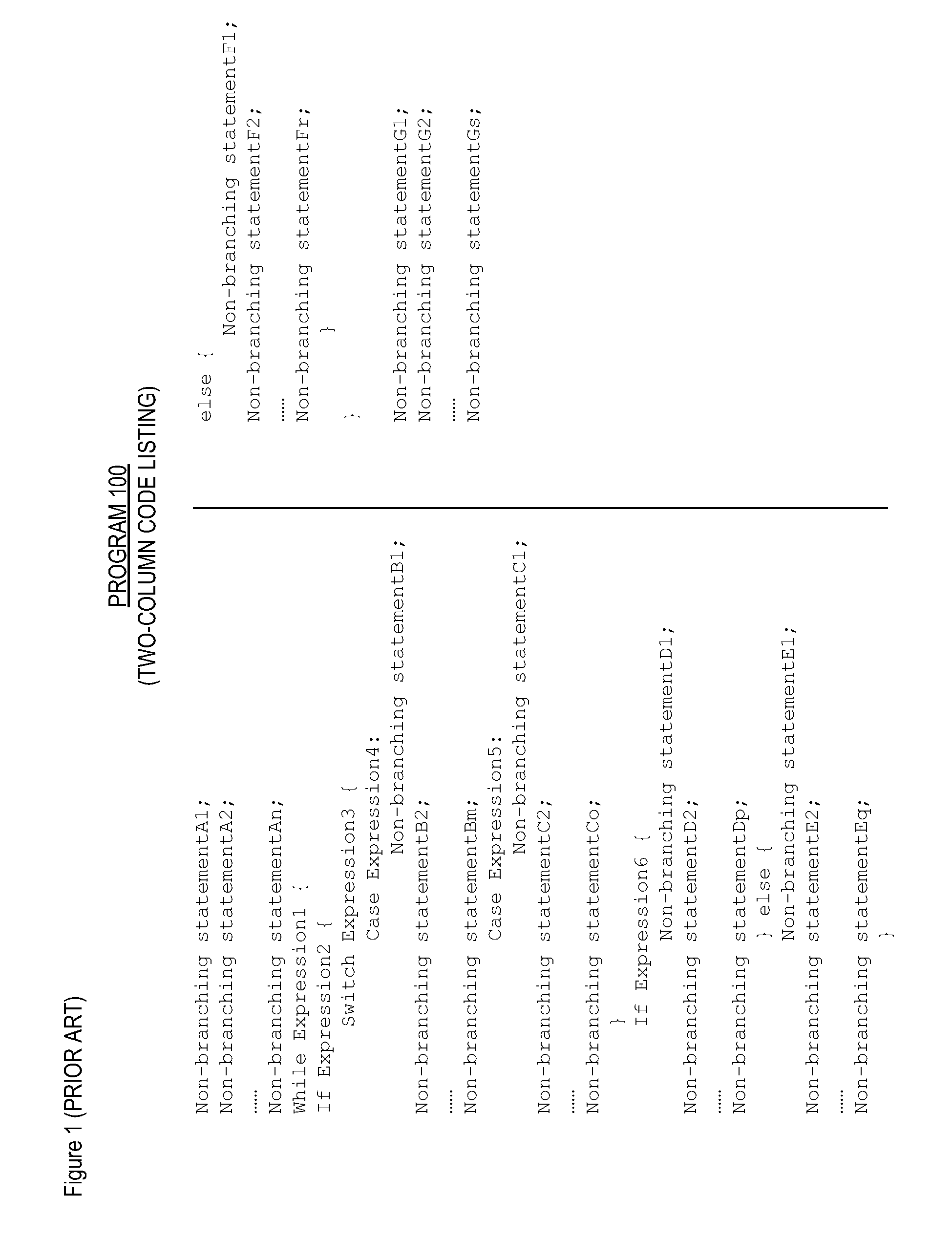Efficient Encoding of Instrumented Data in Real-Time Concurrent Systems
a real-time concurrent system and efficient technology, applied in the field of software runtime analysis, can solve the problems of slow execution of programs, inability to efficiently encode instruments, and inability to meet the requirements of real-time systems, and achieve the effect of efficient, rapid reporting and storage of instrumented data
- Summary
- Abstract
- Description
- Claims
- Application Information
AI Technical Summary
Benefits of technology
Problems solved by technology
Method used
Image
Examples
Embodiment Construction
[0016]Typically methods for determining probe insertion points in a program are based on a control-flow graph that is derived from the program. FIG. 1 depicts illustrative program 100, and FIG. 2 depicts control-flow graph 200 corresponding to program 100, both in accordance with the prior art. As shown in FIG. 2, control-flow graph 200 comprises nodes 201-1 through node 201-13, connected by arcs as shown. For convenience, each node of control-flow graph 200 has been assigned a label that indicates the portion of program 100 (known as a basic block) to which it corresponds.
[0017]Informal Description of the Super Nested Block Method
[0018]An informal description of the Super Nested Block Method as applied to illustrative control-flow graph 200 is first provided in this section. A formal specification of the method is subsequently provided in the following section.
[0019]In the first task of the method, the first layer of super nested block starting with the root node (i.e., node 201-1 ...
PUM
 Login to View More
Login to View More Abstract
Description
Claims
Application Information
 Login to View More
Login to View More - R&D
- Intellectual Property
- Life Sciences
- Materials
- Tech Scout
- Unparalleled Data Quality
- Higher Quality Content
- 60% Fewer Hallucinations
Browse by: Latest US Patents, China's latest patents, Technical Efficacy Thesaurus, Application Domain, Technology Topic, Popular Technical Reports.
© 2025 PatSnap. All rights reserved.Legal|Privacy policy|Modern Slavery Act Transparency Statement|Sitemap|About US| Contact US: help@patsnap.com



